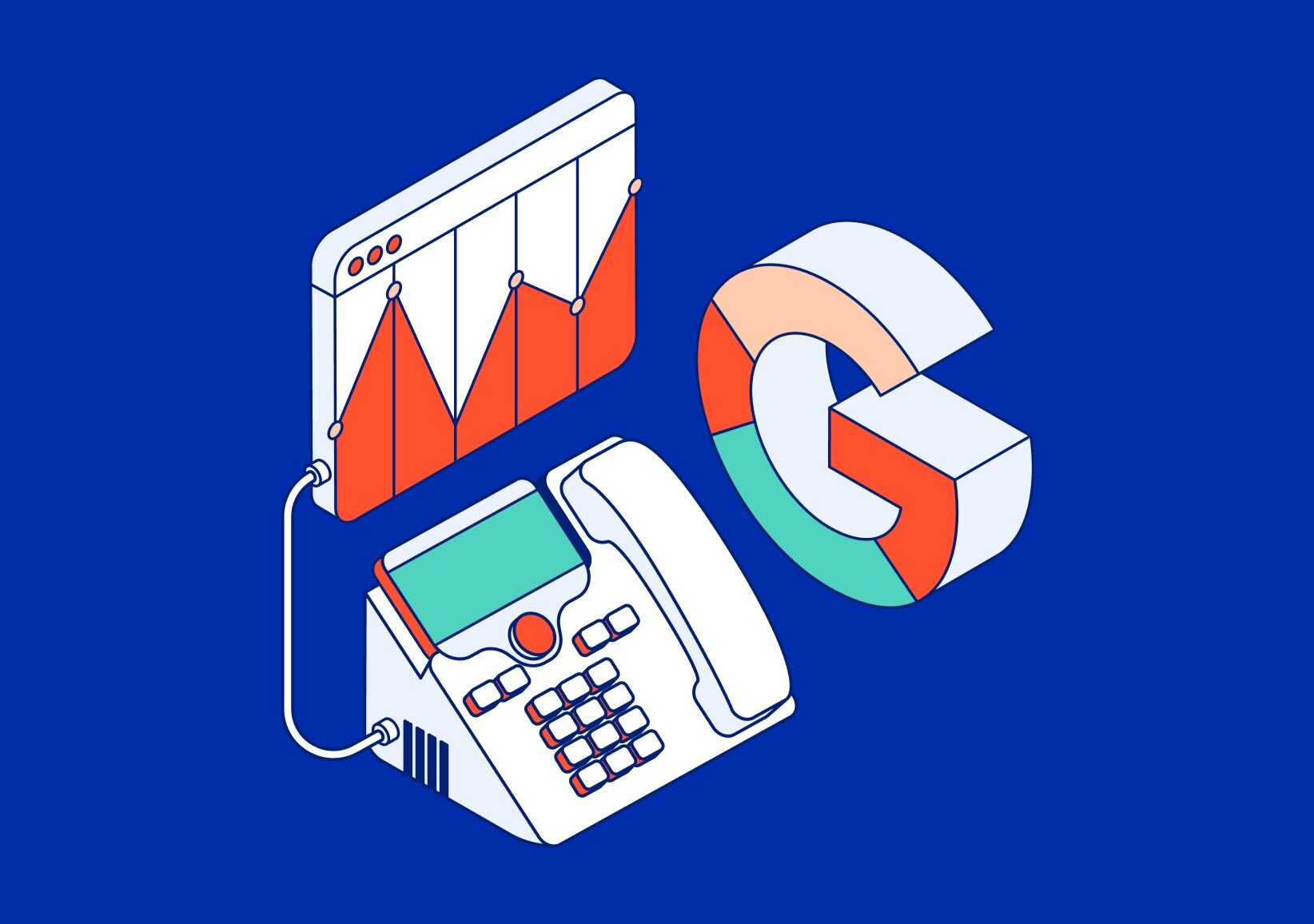There's a good chunk of business ownership that feels like guesswork. Sometimes you're caught off guard by what works and what doesn't.
But, when it comes to getting more customers, you shouldn't be crossing your fingers or throwing a dart at a board. That's where marketing attribution comes into play.
What is attribution in marketing?
Marketing attribution is the process of attributing (hence the name) customer actions to a specific marketing channel.
For example, marketing attribution would allow you to see that a potential customer called your business because they saw your billboard ad. Or, they visited your website because they clicked on a social media advertisement.
In short, marketing attribution helps you understand the effectiveness of your marketing efforts by clearly showing you which ones are driving customer actions.
What is multisource marketing attribution?
You likely know that there are usually more than two steps to the typical customer's journey—it's not often that they go from exposure to purchase.
That's where multisource marketing attribution (which you'll also hear called multi-touch marketing attribution) comes into play. It's a form of marketing attribution that looks at all of the various touchpoints of a customer's journey to help you understand which ones are actually driving conversions.
Let's clear this up with an example. Imagine that a potential customer saw an online advertisement that you were running, but didn't click it or take any action. A few days later, they saw your billboard and made a phone call to your business.
Multisource marketing attribution would tell you that the billboard was responsible for that customer's outreach—and the online advertisement might not be generating the results that you're looking for.
Why is marketing attribution important?
Here's the short answer: It helps you get the most bang for your buck.
Marketing attribution gives you the data you need to make informed decisions about your marketing efforts. You can clearly see which of your marketing channels and campaigns are leading to contacts and conversions—as well as which ones aren't.
That's valuable information you can use as you make choices about which marketing strategies to continue investing in and which ones you're better off dropping or changing.
Working at a small business, you understandably need to keep a close eye on your budget and expenses. Marketing attribution means you can maximize every dollar you spend on your marketing efforts.
Marketing attribution in traditional vs. digital marketing
Much like any other industry, marketing has changed a lot in the past few decades. Most marketing efforts can be split into two main categories: traditional marketing or digital marketing.
Digital marketing is any marketing strategy that happens online. This includes email newsletters, blog posts, social media, videos, search engine optimization, and more.
Traditional marketing is any marketing strategy that happens offline. This includes all of the "old school" methods like television or radio ads, billboards, brochures, events or trade shows, and more.
Marketing attribution for digital marketing is pretty straightforward, with many ad platforms, email marketing software, and social media networks automatically tracking impressions, clicks, and conversions.
It becomes a little trickier with traditional marketing, but that doesn't mean it's impossible. Call tracking is one simple and effective way to understand how all of your marketing efforts—whether they're traditional or digital—are performing.
CallRail will attribute all of your incoming calls to your specific marketing or promotional efforts so you understand exactly what your leads are responding to. You'll be able to see all of the leads generated by your marketing campaigns in a single place and make more informed decisions about your future marketing strategies.
How do you measure marketing attribution?
You can put your calculator and spreadsheet away—most marketing analytics software (which we'll discuss more in a minute) will do the hard work of measuring marketing attribution for you.
Want to understand what's happening at a high level? We won't get too into the technical side of things, but the gist is that you assign unique attributes (think a specific link or phone number) to your various marketing efforts.
As a simple example, you'd list a different phone number on your billboard from the phone number listed on your brochure. Which number a potential customer calls tells you which source they're calling from.
There are also a variety of different marketing attribution models, which are specific frameworks that help you dig deeper into customer interactions. These are often split into two categories:
- Single source attribution: A single touchpoint receives the credit for a conversion
- Multisource attribution: Every touchpoint receives some credit for a conversion
There are a number of different marketing attribution models under each of these categories. Let's take a quick look at some of the most common ones.
Single source attribution models
First-touch attribution: All credit is given to the first marketing channel a lead interacted with in their customer journey.
Last-touch attribution: All credit is given to the last marketing channel a lead interacted with before converting.
Multisource attribution models
Linear: Equal credit is given to all touchpoints.
Time decay: More credit is given to more recent touchpoints, rather than those earlier in the process.
U-shaped: Most of the credit is given to the first touch and the lead creation (40% to each, respectively). The remaining 20% is split among all other touchpoints.
W-shaped: Similar to the U-shaped model, except this one includes first touch, lead creation, and opportunity creation as the three main touchpoints. Each one gets 30% of the credit while the remaining 10% is split amongst all remaining touchpoints.
Those are some of the most popular models, but you can also create a custom marketing attribution model. That's exactly what it sounds like—it's completely custom and you get to decide which touchpoints should carry the most weight.
How do I choose the best marketing analytics software?
The right marketing analytics software will do all of the heavy lifting of marketing attribution for you. There's no shortage of options. So, how can you find the one that's the best fit for your small business?
As you evaluate your choices, think through the following criteria:
Marketing channels: Some analytics software focuses on a specific channel while others are broad and will pull all of your marketing campaigns together. Figure out what channels you use so you can understand what your software needs to track and report on.
Budget: Marketing analytics software can also run the gamut when it comes to expense. Know how much you're willing to spend so you can explore only the options that fit in your budget.
Ease of use: As a small business owner, you wear a lot of hats. Do you have time to learn the ins and outs of a complex platform? Or are you looking for something that's more intuitive and offers excellent support? That will be important as you comb through your choices.
If the phone is one of your customers' preferred channels, CallRail is the right marketing analytics platform for you. It's easy to get up and running to understand exactly which of your marketing efforts make your phone ring.
3 common marketing attribution mistakes
There's a lot that goes into marketing attribution. As you start to get an understanding of which of your efforts are generating results, here are a few common attribution mistakes to be wary of:
- Separating your attribution: Many customers will interact with a combination of your traditional and digital marketing efforts. By separating your marketing attribution, you get a siloed view of your marketing campaigns and lose insight into the complete customer journey.
- Using a haphazard strategy: Marketing attribution works best when it's used consistently. If you track some things and not others, you'll get an incomplete picture of what's driving leads and conversions—which means you'll make decisions using inaccurate data.
- Failing to set clear goals: You probably have distinct goals with each of your marketing channels. Maybe the goal of your billboard is to generate phone calls and start conversations with interested customers. That's a lot different than scoring a conversion right away. Get clear about those goals so that you can better measure the effectiveness of each channel.
Stop guessing and start attributing
As a business owner, you've likely come to terms with the fact that you'll never have everything figured out.
But, understanding where your best leads and customers come from shouldn't be up to chance or guesswork. Fortunately, marketing attribution can remove the mystery—so you can make the most of your marketing budget.
Try CallRail today and understand which of your marketing efforts are making a difference.











